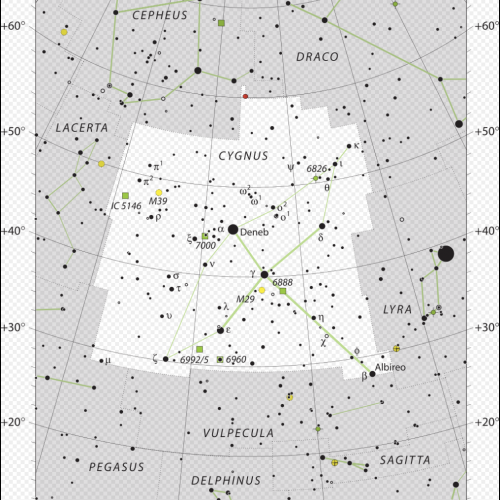| ACQUISITION | PARAMETRES ACQUISITION | |||||
| Objet | Filtres | Bin | Temps Pose | Nombres Poses | Temps Total | |
| Nom | Ngc_6888 | Luminance | 1 x 1 | 3′ | 34 | 1h70 |
| Constellation | Cygne | Rouge | 1 x 1 | 3′ | 17 | 0h85 |
| Distance | 5000 AL | Vert | 1 x 1 | 3′ | 19 | 0h95 |
| Détail prise de vue | Bleu | 1 x 1 | 3′ | 18 | 0h90 | |
| Lieu | Perche-Normandie Cotes de Meuse | S2 | 1 x 1 | 20′ | 93 | 31h |
| Date acquisition | Du 25/06/20 au 22/09/20 | Hα | 1 x 1 | 20′ | 71 | 23h66 |
| Setup | O3 | 1 X 1 | 20′ | 72 | 24h00 | |
| Instrument | Newton-Skyvision | Totaux | 81H06 | |||
| Diamètre | 250mm | Bias | 99 | |||
| Focale | 900 mm | Dark | 31 | |||
| Rapport F/D | 3.6 | Flat | 15 | |||
| Monture | Skywatcher Eq8 Pierro Astro | Acquisition faite par | Stéphane-Francis | |||
| Caméra acquisition | Moravian G2-4000 | Traitement fait par | Francis | |||
| Caméra de guidage | Starlight-X Press Superstar- Atik 314 L | Logiciels utilisés | ||||
| Montage de guidage | DO Skymeca | Acquisition | TheSkyX , Focusmax, Maxpilote | |||
| Echantillonage | 1,68 arc/s | Traitement | Pixinsight, Photoshop | |||
COMMENTS BY THE AUTHORS:
The image processing proved to be quite laborious. The crescent nebula stands in the middle of very dense interstellar clouds, which “crush” the image and do not give enough relief. After a few days of effort, the result is however quite nice and a bit unreal: Ngc 6888 seems to drift over the North American continent.
COMMENTS ON THE OBJECT :
On the right side of the picture, the Crescent Nebula (Ngc 6888) is an emitting nebula located in the constellation of the swan, about 5,000 light years away. It is the result of the rapid stellar winds created by the star Wolf-Rayet WR 136, which pushes matter from slower winds ejected by the same star when it was younger and smaller (red giant type) 400,000 years ago. The impact front generates what is called a Wolf-Rayet bubble. The nebula is mainly ionised by the central star (photoionisation) which has a surface temperature of 70,000K. The chemical composition of the nebula shows an enrichment of nitrogen and carbon and a depletion of oxygen . On the right side of the image, we can see the so-called “soap bubble” nebula, which is actually a planetary nebula, with the sweet name PN G75.5+1.7. It was discovered on July 6, 2008 by the amateur astronomer Dave Jurasevich. This nebula is perfectly spherical. It is probably the final phase of a solar-type star.
